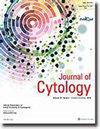Urinary diagnostic cytology beyond the research of neoplastic cells: Usefulness of erythrocyte morphology evaluation to recognize microhematuria source
IF 1
4区 医学
Q4 MEDICAL LABORATORY TECHNOLOGY
引用次数: 0
Abstract
Background: Urine cytology is useful to diagnose urinary neoplasms, whereas its role in the study of microhematuria is debatable. Usually, standard urinalysis (dipstick test and sediment examination with bright field microscope) detects the presence of microhematuria, but only urinalysis with phase-contrast microscopy (PCM) (dipstick test and sediment examination with PCM) allows the observation of red blood cell (RBC) morphology and identify their source. Usually glomerular diseases show RBCs with morphological alterations in high percentages, whereas on urologic bleeding, RBCs are rather homogeneous without morphological alterations. Aims: We compare, for the first time, RBC morphology observed in urine cytology and in urinalysis with PCM, to verify whether urinary cytology allows the recognition of the source of bleeding. Methods and Material: A total of 60 patients who had performed both urine cytology and urinalysis with PCM for microhematuria, detected with standard urinalysis, were investigated. Urine cytology showed RBCs and were negative for neoplastic cells or for inflammatory events. Urine samples were processed with the automated method ThinPrep®. RBCs with abnormal and variable shapes were defined as deformed. RBCs of the same spherical shape were defined as non-deformed. Results: Fifty-six urine cytology with RBCs deformed were confirmed in 55 urinalysis with PCM. One case showed RBCs non deformed in urine cytology and in urine sediment. Overall, agreement, between RBC morphology in urine cytology and urinalysis with PCM, was found in 56/60 cases (93%). Conclusions: Therefore, since sediment examination with PCM is available in only few laboratories, we propose that cytopathologist always reports, in urine cytology, any morphological abnormalities of RBCs in order to provide information of the hematuria origin and correctly refer the patient to a nephrologist rather than a urologist.肿瘤细胞研究之外的泌尿诊断细胞学:红细胞形态学评价对识别微量血尿来源的有用性
背景:尿细胞学检查有助于诊断泌尿系统肿瘤,但其在微量血尿研究中的作用尚存争议。通常,标准的尿液分析(用明场显微镜进行试纸试验和沉淀物检查)可以检测到微量血尿的存在,但只有用相对比显微镜(PCM)进行尿液分析(用PCM进行试纸试验和沉淀物检查)才能观察到红细胞(RBC)的形态并确定其来源。通常肾小球疾病表现出高百分比的红细胞形态改变,而泌尿系统出血,红细胞相当均匀,没有形态改变。目的:我们首次比较尿细胞学和PCM尿液分析中观察到的红细胞形态,以验证尿细胞学是否可以识别出血的来源。方法与材料:对60例进行了尿细胞学检查和PCM微量血尿检查,并进行了标准尿分析的患者进行了调查。尿细胞学显示为红细胞,肿瘤细胞或炎症事件阴性。尿样采用ThinPrep®自动化方法处理。红细胞形状异常和变化定义为变形。相同球形的红细胞定义为未变形红细胞。结果:尿细胞学检查证实56例,其中55例有红细胞变形。1例尿细胞学检查及尿沉积物显示红细胞无变形。总的来说,尿液细胞学检查中的红细胞形态与PCM尿液分析结果一致的病例有56/60(93%)。结论:因此,由于PCM沉淀物检查仅在少数实验室可用,我们建议细胞病理学家在尿细胞学中报告任何红细胞形态学异常,以便提供血尿来源的信息,并正确地将患者转介给肾脏科医生而不是泌尿科医生。
本文章由计算机程序翻译,如有差异,请以英文原文为准。
求助全文
约1分钟内获得全文
求助全文
来源期刊

Journal of Cytology
MEDICAL LABORATORY TECHNOLOGY-
CiteScore
1.80
自引率
7.70%
发文量
34
审稿时长
46 weeks
期刊介绍:
The Journal of Cytology is the official Quarterly publication of the Indian Academy of Cytologists. It is in the 25th year of publication in the year 2008. The journal covers all aspects of diagnostic cytology, including fine needle aspiration cytology, gynecological and non-gynecological cytology. Articles on ancillary techniques, like cytochemistry, immunocytochemistry, electron microscopy, molecular cytopathology, as applied to cytological material are also welcome. The journal gives preference to clinically oriented studies over experimental and animal studies. The Journal would publish peer-reviewed original research papers, case reports, systematic reviews, meta-analysis, and debates.
 求助内容:
求助内容: 应助结果提醒方式:
应助结果提醒方式:


